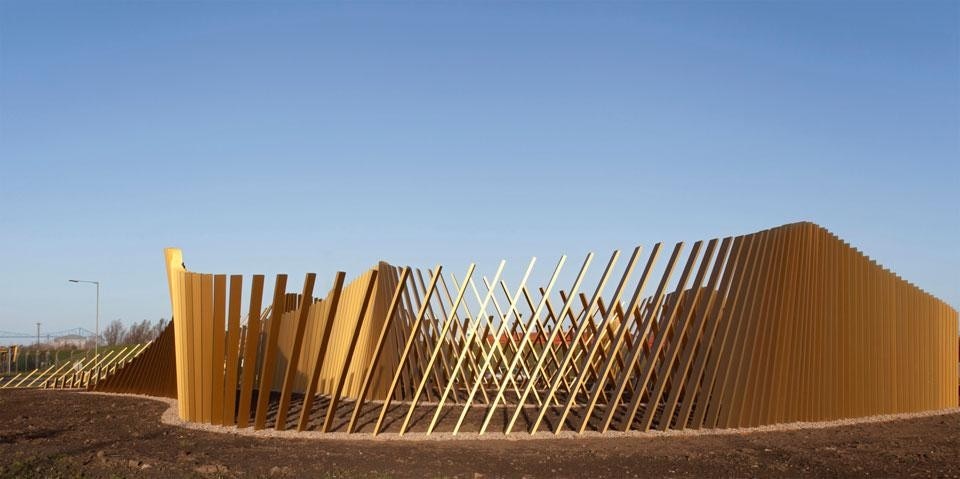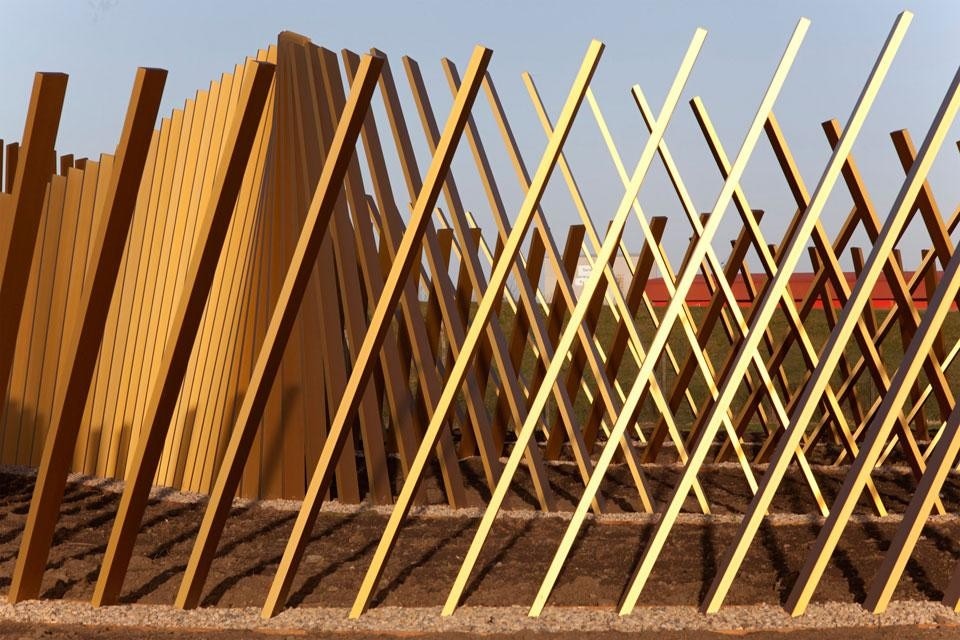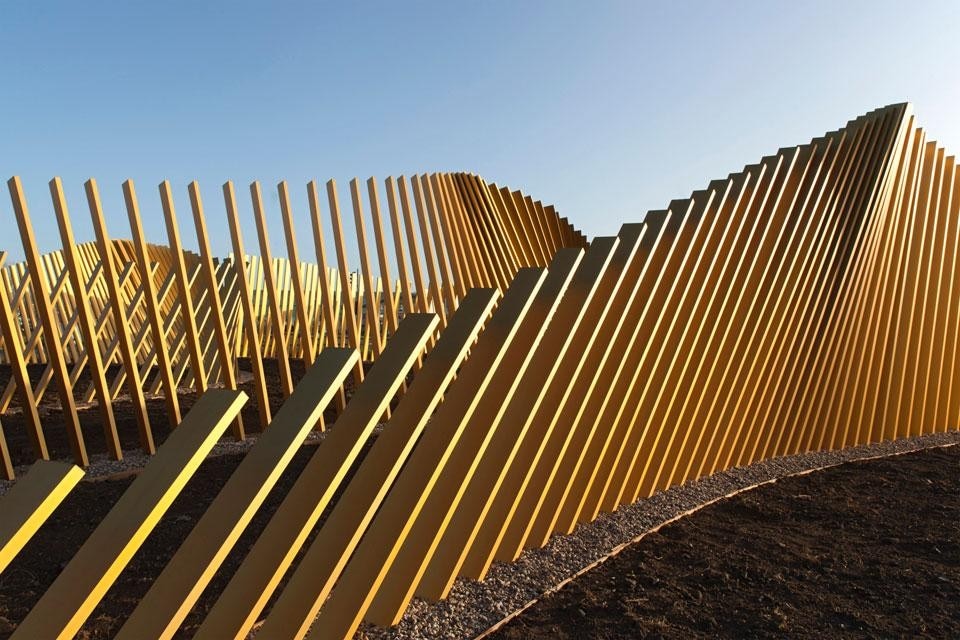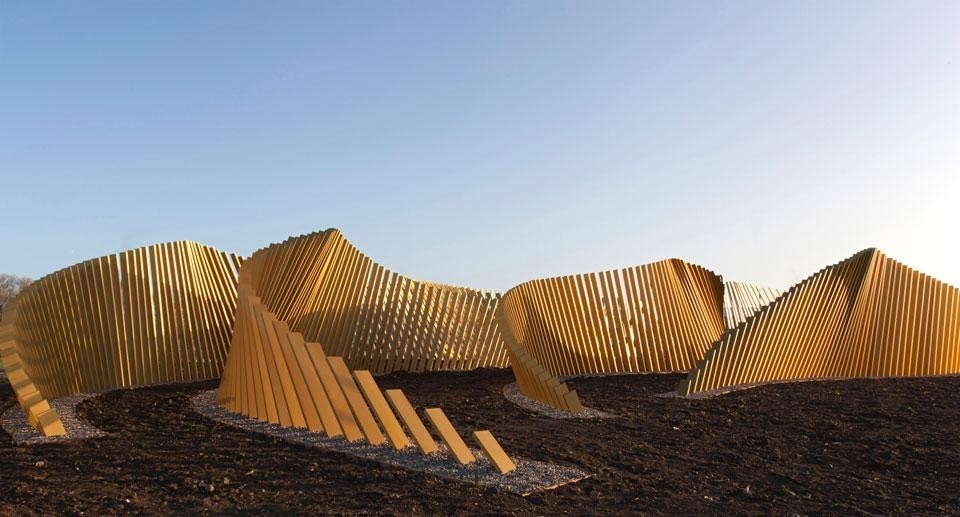A series of anodised aluminium staves are set in the ground in long arrays which give the impression of giant forms in the landscape. The arrays are arranged in layers so that the shape of the piece transforms as people pass by. Fabricated in gold anodised aluminium, Blaze is designed to catch the light in unusual ways creating a bright sculptural form along the often dreary dual carriageway landscape.
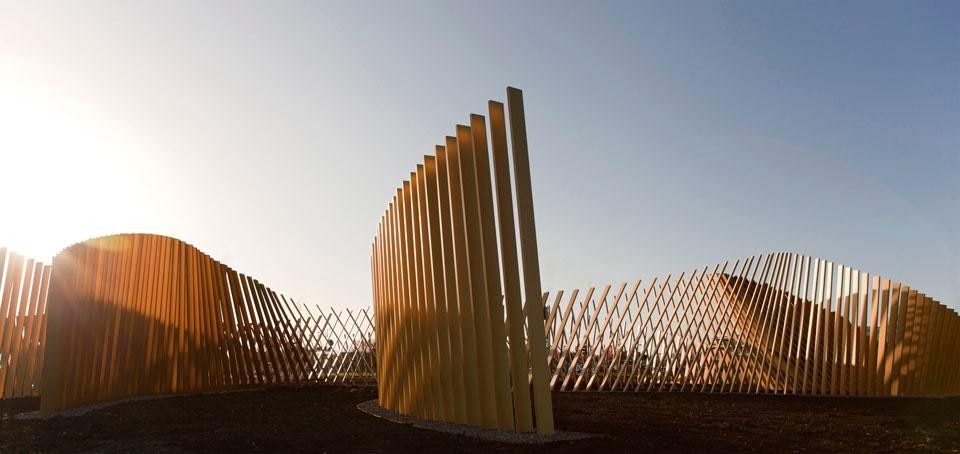
Middlesbrough Borough Council working in partnership with Tees Valley Arts, Arts Council North East, and advised by Christian Barnes, took the view that the project should be developed as a spatial design concept. It should consist of an integrated landscape approach that might be able to extend beyond the Cargo Fleet roundabout populating other parts of the A66 corridor. The Cargo Project Background Fleet roundabout would be just the first prototype of the scheme. A range of other sites have also been identified for the treatment including land adjacent to Trinity Crescent, the approach to Will Alsop's Middlehaven development and the western approaches to the town.
An RIBA competition was held in 2007 to find a designer of the scheme which was subsequently won by Ian McChesney who proposed Blaze. The piece was subsequently developed with engineers Atelier One and fabricator Chris Brammall Ltd.
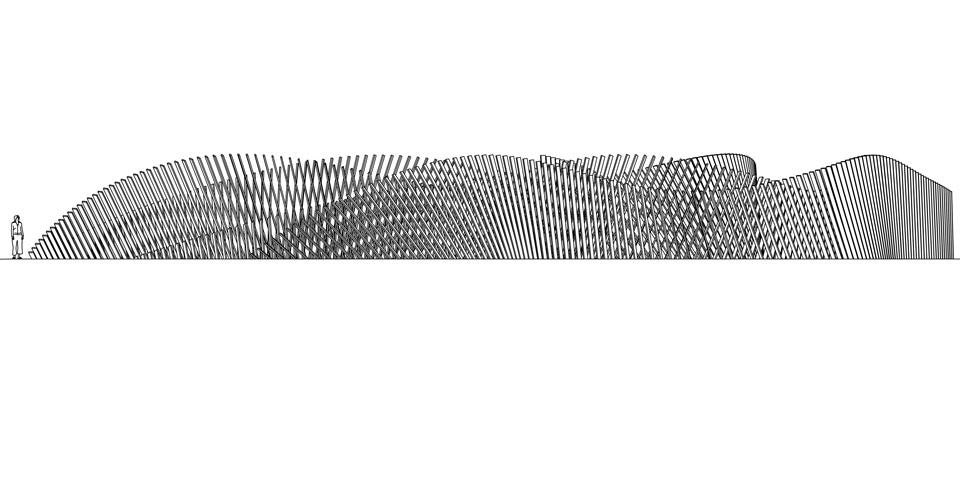
The form of Blaze was developed using simple array tools within Rhinoceros software providing the basic layout and form.
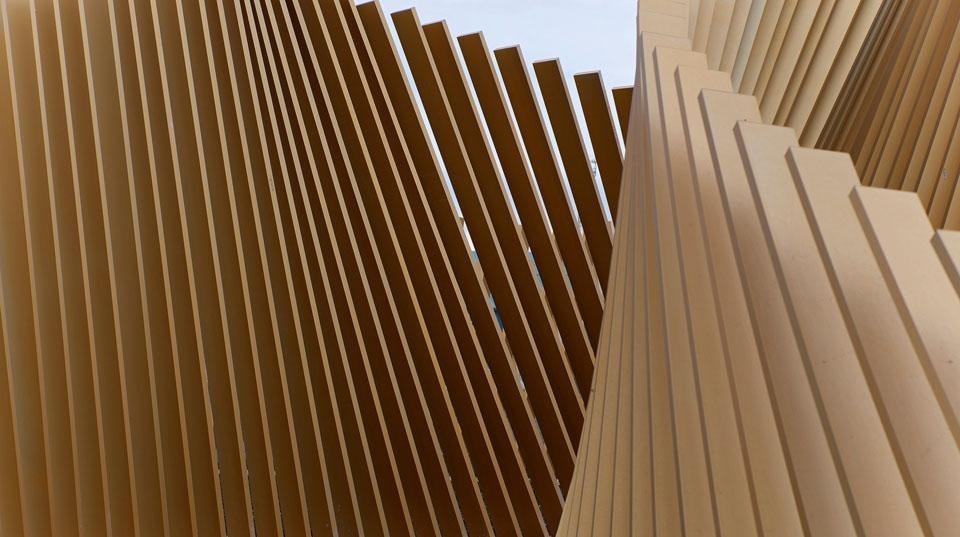
The brackets holding the staves were welded to long curved baseplates which were anchored to concrete strip footings. Once the piece was installed in position and all the angles set, the pivoting brackets were welded up to prevent future movement. Installation of the sculpture on site was completed in about ten days.
About 1.5 km of aluminium tubing was used in the piece allowing us to specify a non standard section extruded specially for the project. The staves have an anodised finish which worked out to be cheaper and more attractive than polyester powder coating. Anodizing increases corrosion resistance and wear resistance, while providing the opportunity to introduce a colour to the finish of the aluminium.
Once installed, the bases of the staves were buried under a layer of pebbles contained within timber edgings with topsoil reinstated alongside. The ground will be rotavated and seeded in the spring.
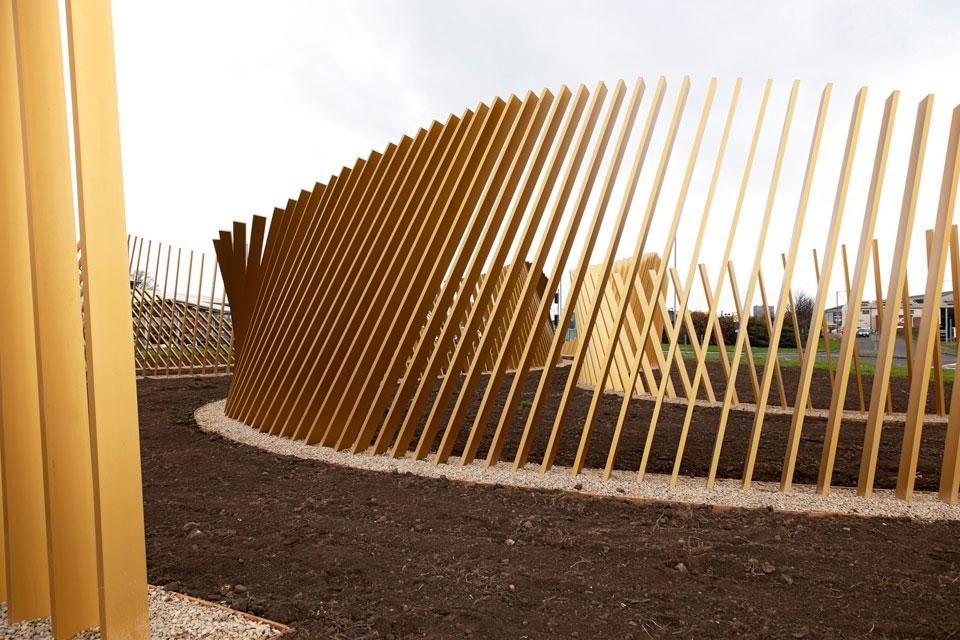
Engineer: Atelier One
Fabricator: Chris Brammall Ltd
Client: Middlesbrough Council
Contract duration: 9 months
Installation time: 10 days
Cost: £116,000
